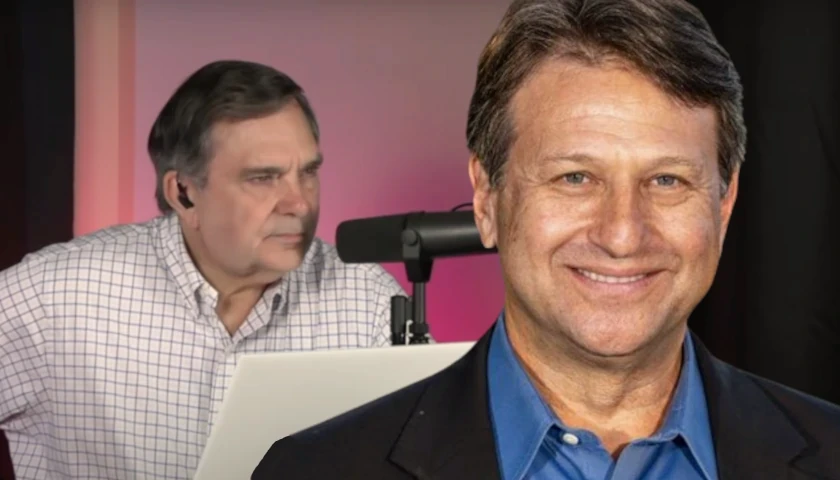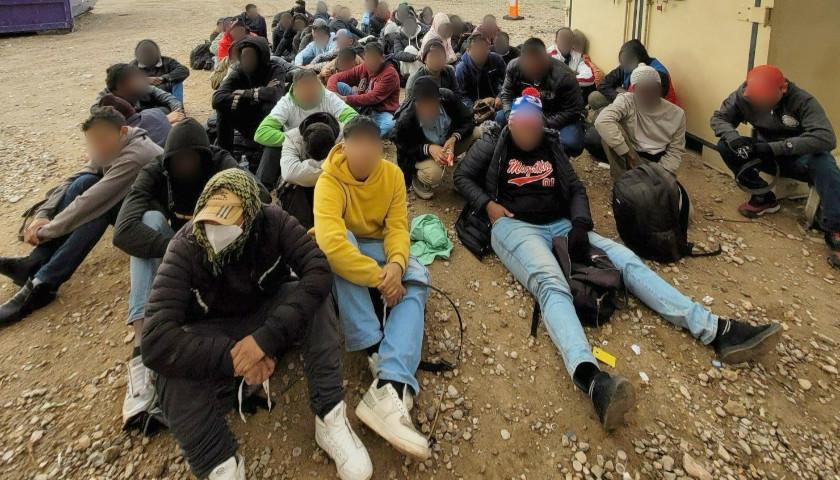Right after Secretary of State Mike Pompeo announced that the FY2019 ceiling for refugee admissions would be no more than 30,000, Democrats in Congress flew into action and federal refugee resettlement contractors began objecting.
On Thursday, 51 U.S. House Democrats, including Tennessee’s Steve Cohen, co-sponsored House Resolution 1073 calling for no fewer than 110,000 refugee admissions for fiscal year 2019 which begins on October 1st. This was the last refugee admission ceiling proposed by Obama before leaving office.
The resolution also takes a swipe at President Trump’s integrity on the refugee issue by stating that Trump “and his administration must operate the United States Refugee Admissions Program (USRAP) in good faith.”
Democrat Senate candidate Phil Bredesen’s history of welcoming thousands of refugees to Tennessee during his two terms as governor, is strong evidence that he agrees there should be a higher number of refugees brought to the U.S. in the coming year.
Between 2003 and 2011, Bredesen’s last year as governor, over 9,000 refugees of multiple ethnicities were brought to Tennessee by federal contractors. The numbers do not, however, account for secondary migrants who are first resettled in other states or other parts of Tennessee but then relocate to follow friends, relatives or jobs and join the growing ethnic enclaves in a different location.
The decrease in refugee arrivals to the U.S. since President Trump has been in office has also decreased the flow of federal taxpayer dollars to local resettlement agencies. Because these agencies are heavily dependent on federal funding some have had to close offices or reduce staffing.
In accordance with the Immigration and Nationality Act, the Trump administration has submitted its proposed 30,000 refugee admission ceiling in a report to Congress. Unlike reports from prior administrations, this year’s report emphasizes the backlog of asylum petitions because along with refugee resettlement, asylum is part of the U.S. humanitarian effort:
Pursuant to Section 207(d) of the Immigration and Nationality Act (INA), the President proposes resettling up to 30,000 refugees in the United States in Fiscal Year (FY) 2019. This ceiling takes into account the operational realities associated with security measures to protect national security and public safety, as well as the need to conduct credible fear screenings of aliens seeking asylum at our borders and address the backlog of affirmative asylum cases, which stands at about 320,000 (approximately 492,000 individuals), the highest since 2002. That is in addition to the asylum case backlog in the immigration court system, which stands at about 348,000.
Additionally, perhaps even for the first time, the proposal report acknowledges that ignoring the asylum petition backlog facilitates illegal aliens attempting to avoid deportation by applying for asylum:
Lengthy backlogs in asylum processing undermine the integrity of the asylum system. They delay legal protection for individuals who are legitimately fleeing persecution and have valid asylum claims. Further, such delays are a ‘pull factor’ for illegal immigration. By providing protection from removal, they create an incentive for those without lawful status to enter and remain in the United States. Asylum applicants also are eligible to obtain employment authorization after their asylum applications have been pending for six months, creating an incentive to file frivolous or fraudulent asylum applications.
Unlike refugees who enter the U.S. through the USRAP and are immediately able to work and apply for all forms of public assistance, people who apply for asylum enter the country illegally or alternatively, enter legally using a visa but request asylum when the visa expires.
Asylees whose petitions remain unadjudicated, generally are not able to access public assistance programs but may be granted a work permit if after 150 days no decision has been made on their asylum application. Once a petition is granted, however, an asylee is immediately eligible to work, obtain a social security card and apply for assistance through the U.S. Office of Refugee Resettlement. Approved asylees also become eligible to apply for all forms of public assistance.
As detailed in this year’s report, the Trump administration intends to process asylum applications “last in, first out” so that disapproved applicants will be deported “well before six months have passed, which minimizes the incentive to file frivolous or fraudulent asylum applications to obtain work permission.”
Having shifted more DHS personnel to process asylum petitions and fewer refugee admissions, the number of asylum filings has decreased over the last two fiscal years by 30 percent.
Despite the FY 2018 refugee admission ceiling of 45,000, by the end of September when the fiscal year ends, only about 21,000 refugees will have been resettled in the U.S. . The lower number reflects enhanced screening of applicants and the earlier travel bans.
Release of the administration’s written proposal for FY19 refugee admissions triggers the statutory consultation process with the Senate and House Judiciary Committees. While this “consultation” is not well-defined in the Refugee Act of 1980, specific types of information are required to be provided by the administration which is the function of the administration’s submission.
For example, the Act requires that the administration provide “an analysis of the anticipated social, economic and demographic impact of their admission to the United States.” This section includes data from the U.S. Office of Refugee Resettlement 2016 Report to Congress and describes low levels of education of entering refugees, significant deficits in English language skills, employment rates and public benefits usage.
Observers of the process have commented that because the President has the express statutory authority to determine the refugee admission ceiling, for many years through many administrations, consultation with Congress amounted to no more than a rubber stamp of the President’s proposal.
This year, however, Rep. Bob Goodlatte (R-Va.) criticized President Trump for failing to consult with Congress before a refugee admission ceiling was announced. Goodlatte may be getting ahead of himself on this since Pompeo’s release of the 30,000 number amounted to nothing more than an announcement of what the President was proposing in the report that was subsequently sent to Congress.
Goodlatte has co-sponsored a bill that proposes to “reform” the refugee program in part by setting the base admission ceiling at 50,000 with any adjustments requiring approval by Congress. Another section of his bill, purports to enable states and local jurisdictions to annually refuse the resettlement of refugees, but neglects to account for the regulatory back-door that is the subject of Tennessee’s Tenth Amendment lawsuit over the program.
Regardless of whether the respective Judiciary Committees take the process more seriously by holding hearings, the President cannot sign off on the refugee ceiling determination until the consultation process is considered finished.
A 2010 Senate Foreign Relations Committee hearing titled Abandoned Upon Arrival: Implications for Refugees and Local Communities Burdened by a U.S. Resettlement System That is Not Working, recognized the significant impact of refugees on local resources but did not result in program reforms.
The Senate Judiciary Committee is currently embedded in the Kavanaugh confirmation process and unlikely to have sufficient time to hold any hearings on the proposed refugee number before the new fiscal year begins. It is not clear whether Goodlatte might choose to pursue the issue with more focus in light of his bill and what appears to be his own support for a higher admission ceiling.
What Democrats have made clear, however, is that should they gain a majority in either the Senate or House, the fight for higher refugee admissions will continue.
Chris Alto is an investigative reporter at The Tennessee Star






President Trump was elected by the people to stop this progressive march to the end of our country as we know it. Democrats whether socialist or progressives only care about their power not the citizens of this country. Rome went fast and so can we , the Democratic Party and its destruction of morals and vulgar leadership is trying to lead America down that path. We need statesmen not more swamp creatures, like phony Phil.